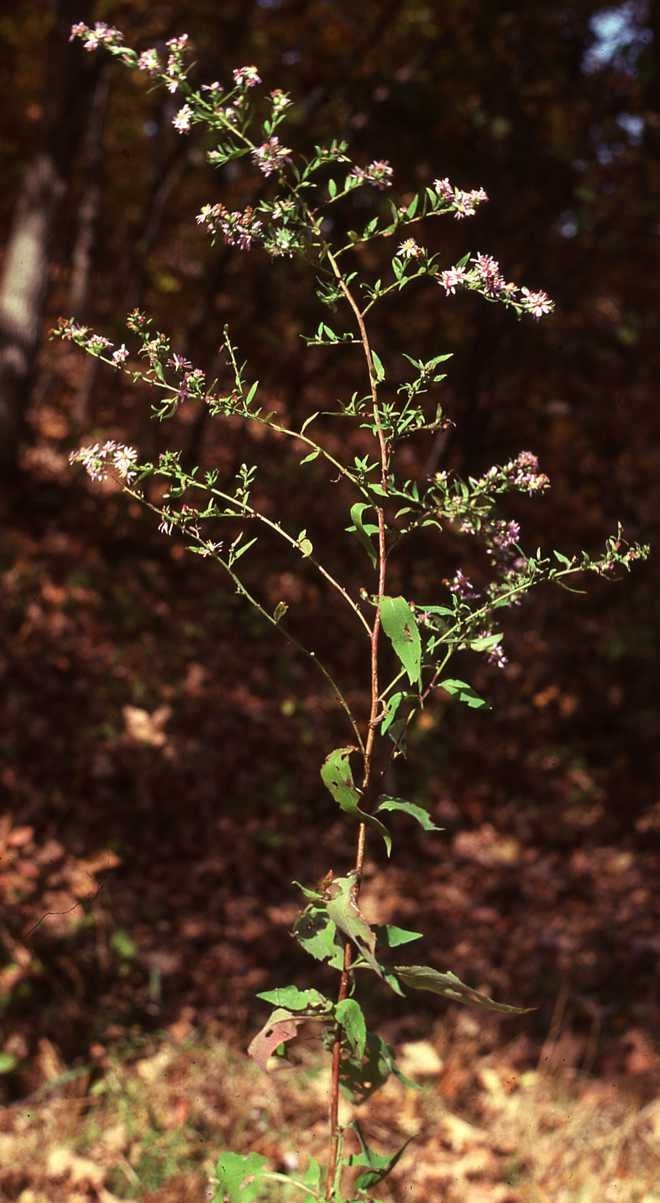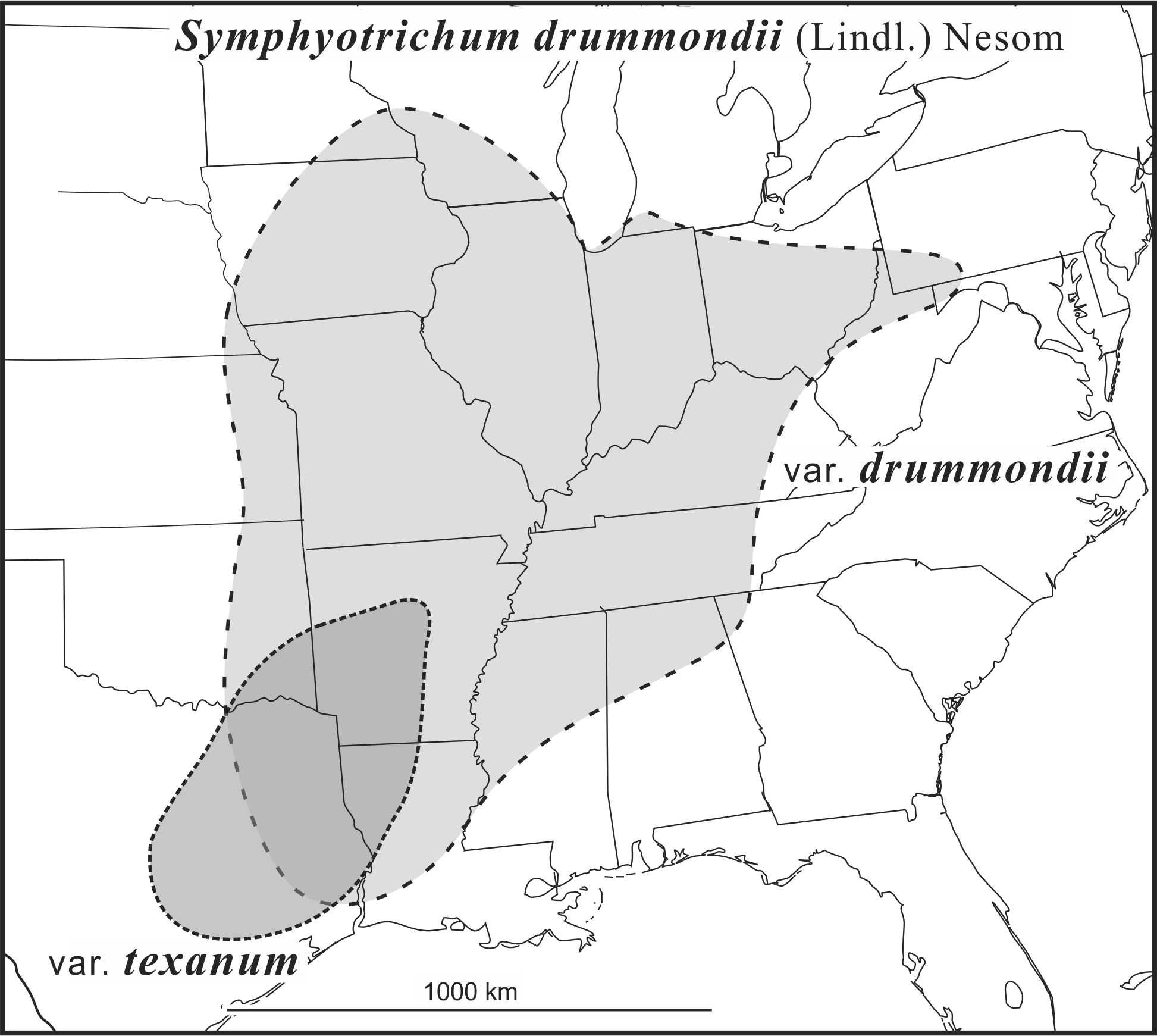Drummond’s Aster
Symphyotrichum drummondii (Lindley) Nesom is native to mostly shaded, loamy or rocky, mesic to dry soils, open deciduous woods, clearings, thickets, stream banks and edges of swamps, sometimes roadsides or ditches in the eastern US from Pennsylvania west to southern Minnesota and south to Georgia and Texas (Brouillet et al. 2006; FNA). Stem hairless to sparsely pilose, or hirsuto-pilose below becoming ± densely so in the upper stem; basal leaf bases shallowly cordate to rounded; stem leaves winged-petiolate, becoming broadly so or sessile distally; rays usually bright blue to purple or lavender, sometimes white. The species includes diploids (2n=16) and tetraploids (2n=32).
Two varieties that grade together are recognized:
Symphyotrichum drummondii var. drummondii
Plants 40–120 cm; stems proximally sparsely hirsute, distally densely so; leaves firm, basal and proximal long-petiolate, petioles ± winged, proximal bases ± cordate or truncate, sometimes obliquely; heads in ample, paniculiform arrays with divaricate or ascending, bracteate, often racemiform branches; peduncles ± secund, 0–4 cm, bracteate; involucres campanulate, (3.5–)4.5–7 mm; ray corollas usually bright blue, light purple, bluish violet, or lavender, sometimes white; cypselae glabrous
Symphyotrichum drummondii var. texanum
Plants 30–80 cm; stems ± densely hirsute, particularly distally; leaves membranous, becoming thickish, brittle, basal and proximal winged-petiolate, proximal bases cordate, becoming rounded-truncate distally; heads in open, paniculiform arrays with very long, widely spreading branches; peduncles 1–4 cm, densely, minutely bracteate; involucres turbinate to hemispheric, 3.8–5.2 mm; ray corollas bluish white; cypselae strigillose
Variety drummondii is often confused with Symphyotrichum urophyllum, a usually white-rayed species with erect array branches.
Brouillet, L., J.C. Semple, G.A. Allen, K. Chambers and S. Sundburg. 2006. Symphyotrichum Nees. pp. 465-539. In Flora North America Editorial Committee, eds. Flora of North America. Vol. 20. Asteraceae, Part 2. Astereae and Senecioneae. Oxford University Press, New York.
Last revised 13 May 2025 by J.C. Semple
© 2025 J.C. Semple, including all photographs unless otherwise indicated
1-4. Symphyotrichum drummondii. 1-2. var. drummondii, small shoot and larger shoot inflorescence, Semple & Brouillet 3743, Times Beach, St. Louis Co., Missouri. 3. var. texanum, robust shoot inflorescence, Texas. 4. Range map draft JCS.







